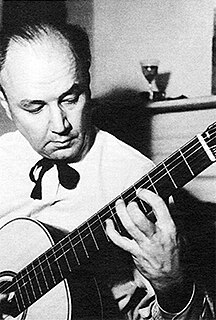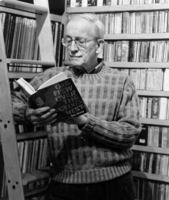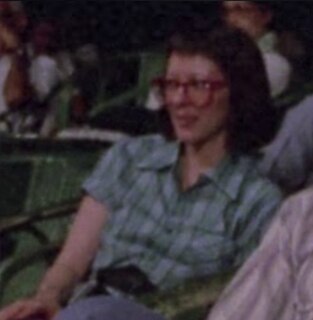Related Research Articles

Photomontage is the process and the result of making a composite photograph by cutting, gluing, rearranging and overlapping two or more photographs into a new image. Sometimes the resulting composite image is photographed so that the final image may appear as a seamless physical print. A similar method, although one that does not use film, is realized today through image-editing software. This latter technique is referred to by professionals as "compositing", and in casual usage is often called "photoshopping". A composite of related photographs to extend a view of a single scene or subject would not be labeled as a montage, but instead a stitched image or a digital image mosaic.
This list contains only complete, printed English-language editions of The Hobbit by J. R. R. Tolkien. It is not for derived or unprinted works such as screenplays, graphic novels, or audio books.

The Secret of the Old Clock is the first volume in the Nancy Drew Mystery Stories series written under the pseudonym Carolyn Keene. It was first published on April 28, 1930, and rewritten in 1959 by Harriet Stratemeyer Adams.

The Mystery At Lilac Inn is the fourth volume in the Nancy Drew Mystery Stories series. It was first published in 1930 under the pseudonym Carolyn Keene. Mildred Wirt Benson was the ghostwriter for the 1930 edition.
Leo Dillon and Diane Dillon were American illustrators of children's books and adult paperback book and magazine covers. One obituary of Leo called the work of the husband-and-wife team "a seamless amalgam of both their hands". In more than 50 years, they created more than 100 speculative fiction book and magazine covers together as well as much interior artwork. Essentially all of their work in that field was joint.

Cover art is a type of artwork presented as an illustration or photograph on the outside of a published product such as a book, magazine, newspaper (tabloid), comic book, video game, music album, CD, videotape, DVD, or podcast. The art has a primarily commercial function, for instance to promote the product it is displayed on, but can also have an aesthetic function, and may be artistically connected to the product, such as with art by the creator of the product.
Robert Lawson was an American writer and illustrator of children's books. He won the Caldecott Medal for his illustrations in They Were Strong and Good in 1941 and the Newbery award for his short story for Rabbit Hill in 1945.

The Ringmaster's Secret is the thirty-first volume in the Nancy Drew Mystery Stories series. It was first published in late 1953 under the pseudonym Carolyn Keene. The actual author was ghostwriter Harriet Stratemeyer Adams.
John Alan Maxwell was an American artist known primarily for his book and magazine illustrations, as well as historical paintings. He also was an illustrator for many commercial publications, including Collier's Weekly, The Saturday Evening Post, The Golden Book Magazine, The American Magazine, and Woman's Home Companion.
Farrar & Rinehart (1929–1946) was a United States book publishing company founded in New York. Farrar & Rinehart enjoyed success with both nonfiction and novels, notably, the landmark Rivers of America Series and the first ten books in the Nero Wolfe corpus of Rex Stout. In 1943 the company was recognized with the first Carey-Thomas Award for creative publishing presented by Publishers Weekly.
Olga Lehmann was a Chilean-born British visual artist.

Vladimir Bobri (Bobritsky) was an illustrator, author, composer, educator and guitar historian. Celebrated for his prolific and innovative graphic design work in New York since the mid-1920s, Bobri was also a founder of the New York Society of The Classic Guitar in 1936, and served as editor and art director of its magazine, Guitar Review, for nearly 40 years.

Julius John Lankes (1884–1960) was an illustrator, a woodcut print artist, author, and college professor.

H. Lawrence Hoffman was a commercial book jacket designer, illustrator, and painter who worked in New York City. He illustrated book covers for over 25 publishing companies, including Alfred A Knopf, Pocket Books, Popular Library, Macmillan, Simon & Schuster, The Viking Press, and Random House. Over the course of his career, he illustrated over 600 book jacket covers.

Paul Bacon was an American book and album cover designer and jazz musician. He is known for introducing the "Big Book Look" in book jacket design, and designed about 6,500 jackets and more than 200 jazz record covers.

Mary (May) Wilson Watkins Preston was an American illustrator of books and magazines and an impressionist painter. She had an interest in art beginning in her teenage years, but her parents sent her to Oberlin College hoping that she would develop another interest. After three years, and at the urging of one of her teachers, Preston's parents allowed her to return to New York and attend the Art Students League. She then studied in Paris with James Whistler and next at the New York School of Art with William Merritt Chase.
Joseph W. Papin, also known as Joe Papin was a reportorial artist, illustrator, courtroom sketch artist, and political cartoonist.
Naiad June Einsel was an American commercial illustrator and artist. Over the course of her career, Einsel completed artwork for magazines, newspapers, and brands. Einsel, along with husband Walter, was inducted into the Society of Illustrators' Hall of Fame in 2008.

Candy P. Jernigan was an American multimedia artist, graphic designer, and set designer, instrumental in the avant-garde art scenes of Provincetown and New York City in the late 1970s and 1980s. She is best known for her vivid collages of found objects she described as "rejectamenta", presented in diagrams to absurd effect. Jernigan is also known for having designed the covers and jackets of dozens of music albums and books as a colleague of Paul Bacon.
Richard Staples (Dick) Dodge was an American illustrator.
References
- ↑ "Contributors: Howard W. Willard". www.drleslie.com. Retrieved 2018-11-26.
- ↑ "10 ADDED TO STAFF AT COOPER UNION: Whole Art School Is Being Reorganized Under Plan of New Director". New York Times. 1 August 1938.
- ↑ "Charlotte Willard papers, 1939-1970". www.aaa.si.edu. Retrieved 2018-11-26.
- ↑ "Art Notes". New York Times. 26 March 1943. p. 16.
- ↑ Stiles, Kent (3 May 1942). "Cuba Plans New Stamps to Fight Fifth Column". New York Times.
- ↑ "Art Notes". New York Times. 25 February 1943.
- ↑ "Hot Lips Page, Sammy Price in Artist's Ball". Afro-American. 30 November 1940. p. 14.
- ↑ "Paul Robeson Hosts WQXR Program | WNYC | New York Public Radio, Podcasts, Live Streaming Radio, News". WNYC. Retrieved 2018-12-19.
- ↑ "About Art and Artists". New York Times. 19 February 1955. p. 13.
- ↑ Ashton, Dore (15 May 1958). "Art: Kabak's Triangle". New York Times.
- ↑ Art Direction. Advertising Trade Publications. 1960. p. 20.
- ↑ "Arts and Leisure Guide". New York Times. 19 September 1976.